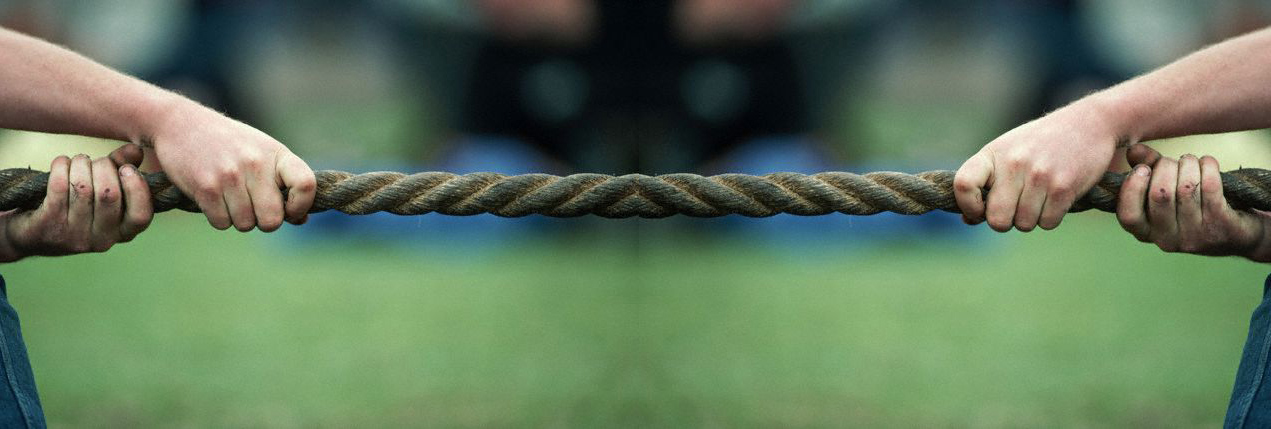The Push-Me Pull-You Of Retailing...
Retailing can seem a straightforward business. Develop a compelling mix of product and price to attract customers into a store, and then sell to them once they're there.
However, how customers view a retail brand is largely based on their experience of the shopping trip. And a shopping trip is a living, breathing multi-dimensional entity. As well as pulling them in, that experience can just as easily push customers away.
This wasn't how I was taught. The 4Ps of Marketing - Product, Price, Promotion, and Place - were all about attracting customers. Choose an assortment of products that would be useful to people: satisfying their grocery shopping needs, for example, or providing everything for a mother and baby. Decide what balance of quality and price to offer. Put shops in places people can easily reach, and use a mix of advertising and promotional mechanics to explain the offer, and encourage them to visit. Then, inside the store, focus on a combination of promotions, point of sale, and enticing displays, to encourage purchase. Simple.
However, once I started working with customers, my perspective changed.
First, while location, price, quality, and assortment would come up as major reasons for choosing one retailer over another, so too did service. And this wasn't about how much they were served, but rather about the employees they encountered.
I remember, for example, some research I was doing in the US into Retail and Service brands. I was trying to understand why customers were so clear which ones gave them good service, and which ones did not. The answer turned out to be blindingly simple. As one respondent put it: "In these stores the employees enjoy working there, in those they don't".
Clearly, there was a "P" missing - People.
Second, I found that while engaged employees were an attraction, disinterested employees were a reason not to come back to a store - they made the trip uncomfortable. And there turned out to be a number of other factors that had a similar effect. For example, repeated gaps on the shelves meant a customer was never sure if they would be able to get what they wanted. Too much clutter made the store difficult to navigate. And lines at the checkout made the time the shopping trip would take unpredictable.
Getting these things right would never be a reason to choose a store. But they were sources of anxiety, which pushed customers away, even if they were attracted by the offer.
Third, it became clear that there were deeper emotions than just anxiety in play. Customers observed the behaviors of the brand during the shopping trip, and drew conclusions about how the brand really felt about them. Disengaged employees, for example, made customers feel unappreciated, and if rude, even slighted. So did lines at checkouts that were open, if there were others still closed. In fact, pretty much every behavior could be symbolic of the brand's attitude to them.
This really struck me when I was investigating gaps on the shelves with customers. Tesco had implemented a new ordering system which had initially caused a lot of gaps. Not surprisingly, customer satisfaction with availability fell. But 12 months later, although Tesco now had less gaps than it had ever had before, satisfaction was continuing to fall. Why? Because, thanks to the length of time it had taken to fix the problem, together with the store employees feeling powerless to do anything about it, customers had concluded that Tesco no longer cared about them. They hadn't noticed the improvements, and some hadn't even bothered to come back.
Rather than just the 4Ps, the shopping trip proved to be a combination of push and pull factors, of what the brand had to offer, and how it behaved.
Clearly, a strong retail brand need these all to be aligned - Apple stores and Trader Joe's being two good examples. And indeed, Tesco was transformed in the UK over the course of a decade, once it focused on delivering its "every little helps" philosophy through every element of the shopping trip.
However, in today's connected world, this is not just true of retailing. The frequency and variety of interactions are multiplying for every brand, exposing the behaviors that lay behind.
Marketing needs to focus on the whole customer experience, on the push as well as the pull - and to work ceaselessly across the organization, to align those behaviors with the brand...
